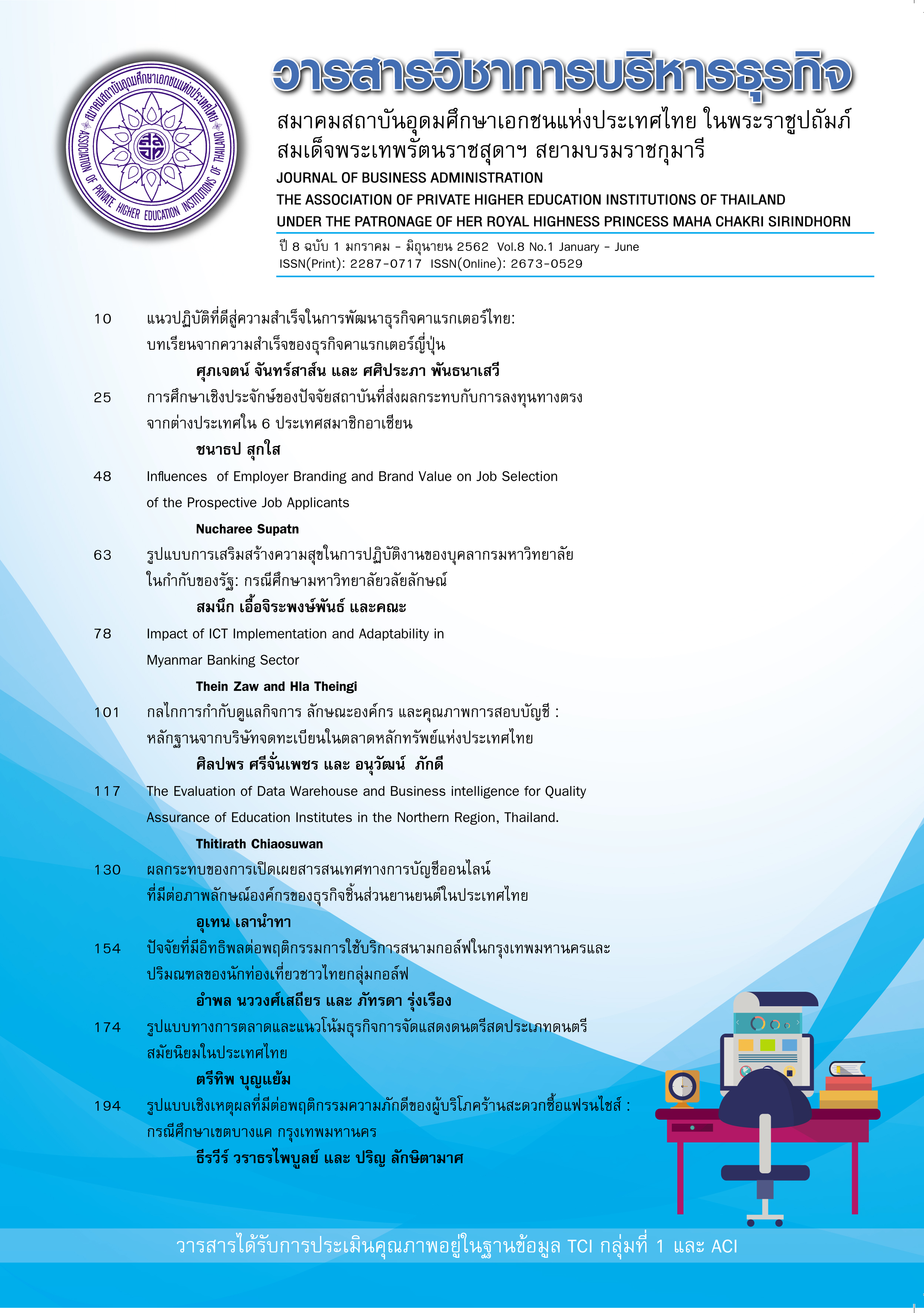Best Practice for the Success of Thai Character Business Development: Lessons from Successful Japanese Character Business
Keywords:
Best Practice, Character Business, Competitive AdvantageAbstract
This study is a qualitative research with a primary objective to find the ways to promote Thai
character business’s competitive advantage by employing a best practice from Japanese character
business. Additionally, it relies on literature review, as well as in-depth interviews with nine stakeholders
of Thai character business and four stakeholders of Japanese character business, to analyze and
compare the business situations and factors determining competitive advantage of Thai and Japanese
character businesses, to synthesize the best practice which contributes to Japanese character business’s
success and to create the possible practice for Thai character business based on such best practice.
The findings reveal that Thai character business is very small and has low competitive advantage due
to character design and marketing strategies which are not complied with consumers’ lifestyle and
lack of cooperation from other domestic businesses. In order to promote Thai character business’s
competitive advantage, entrepreneurs, professional associations, education institutes and public
sectors have to work cooperatively and improve their operations in accordance with the suggested
strategy map. This is the first study which focuses on Thai character business and tries to construct
the best practice for promoting Thai character business’s competitive advantage. Moreover, it sheds
more light upon what each stakeholder, entrepreneurs, professional associations, education institutes
and public sector, should do to promote Thai character business’s competitive advantage.
References
Buckingham, D., & Sefton-Green, J. (2003). Gotta Catch ’Em All: Structure, Agency and Pedagogy in Children’s Media Culture. Media, Culture & Society, 25(3), 379 – 399.
Calandro, J. (2010). Disney’s Marvel Acquisition: A Strategic Financial Analysis. Strategy & Leadership, 38(2), 42 – 51.
Hosany, S., Prayag, G., Martin, D., & Lee, W.L. (2013). Theory and strategies of anthropomorphic brand characters from Peter Rabbit, Mickey Mouse, and Ronald McDonald, to Hello Kitty. Journal of Marketing Management, 29(1-2), 48 – 68.
Isomura, K., Suzuki, K., & Tochimoto, K. (2015). The Evolution of Character Business Model in Japan: Duffy, Hello Kitty and Kumamon. Strategic Direction, 31(4), 34 – 37.
Itagoshi, G.T. (2014). Marketing Strategies for Japanese Industry within U.S. Animation Market. International Journal of Business and Social Science, 5(8), 280 – 287.
Kamata, N., Shimizuishi, T., & Nishiyama, T. (2014). Low License Fees Help Japan Cartoon Characters Find Fame Abroad. Nikkei Asian Review, Retrieved from https://asia.nikkei.com/Business/Trends/Low-license-fees-help-Japan-cartoon-characters-find-fame-abroad?page=1
Kanai, S., Hara, Y., Kobayashi, H., & Takemura, M. (2014). Making and Consuming Characters. International Journal of Multidisciplinary in Business and Science, 2(2), 68 – 75.
McVeigh, B.J. (2000). How Hello Kitty Commodities the Cute, Cool and Camp. Journal of Material Culture, 5(2), 225 – 245.
Ministry of Industry. (2016). Thai 20 Year Industry Development Strategies 4.0 (2017-2036). Bangkok: Ministry of Industry.
Porter, M. (1990). Competitive Advantage of Nations. New York: The Free Press.
Statista. (2016). Facts on The Walt Disney Company. Retrieved from https://www.statista.com/topics/1824/disney/.
Tobin, J. (2004). Pikachu’s Global Adventure: The Rise and Fall of Pokemon. North Carolina: Duke University Press.
Wai-Ming, B. (2001). The Hello Kitty Craze in Singapore: A Cultural and Comparative Analysis. Asian Profile, 29(6), 481 – 491.
Yano Research Institute. (2016). Licensed Character Business in Japan: Key Research Findings 2016. Retrieved from https://www.yanoresearch.com/press/pdf/1556.pdf.

Downloads
Published
How to Cite
Issue
Section
License
บทความที่ลงตีพิมพ์ในวารสารวิชาการบริหารธุรกิจ สมาคมสถาบันอุดมศึกษาเอกชนแห่งประเทศไทยต้องเป็นบทความที่ไม่เคยได้รับการตีพิมพ์เผยแพร่ หรืออยู่ระหว่างการพิจารณาตีพิมพ์ในวารสารอื่นๆ การละเมิดลิขสิทธิ์เป็นความรับผิดชอบของผู้ส่งบทความโดยตรง

